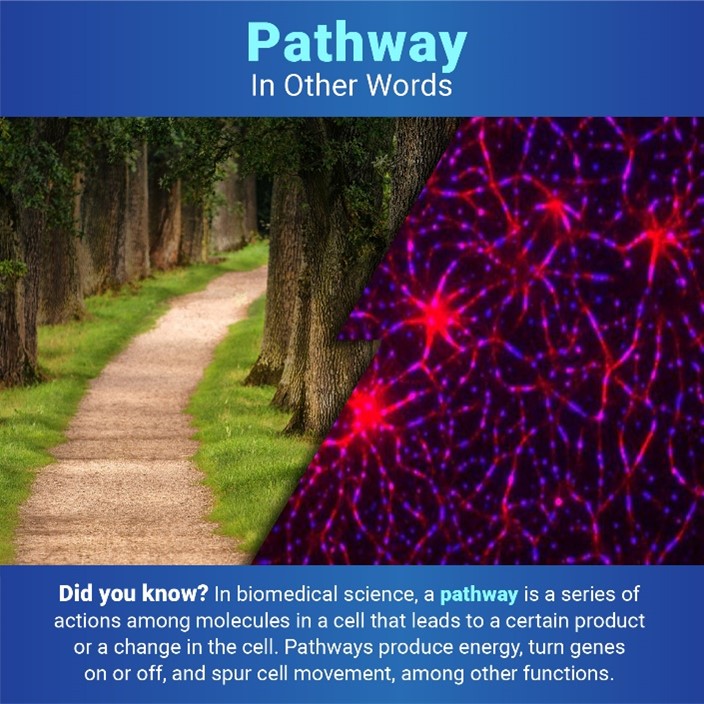For many people, the word pathway may bring to mind stepping stones in a garden or a trail through a forest. But when biologists talk about a pathway, they’re referring to a series of actions among molecules in a cell that leads to a certain product or change within that cell. Pathways maintain balance during walking, control how the eyes’ pupils respond to light, and affect skin’s reaction to changing temperature. They control our bodies’ responses to the world, and errors in them can lead to disease.

Pathways are triggered by chemical cues that indicate the state of the environment or the body, such as injury, stress, or the presence of food. There are many types of pathways, but these are some of the most well-known:
- Metabolic pathways make the chemical reactions in our bodies possible. One example is the process cells use to break down food into energy molecules. Other metabolic pathways help construct the molecular building blocks of complex structures like DNA.
- Gene-regulatory pathways turn genes on and off. This process activates or stops the production of certain proteins, which are necessary for nearly every task in our bodies. Roles of proteins include transporting oxygen, enabling muscles to move, and fighting germs.
- Signal transduction pathways move a signal from outside to inside a cell to ultimately trigger a function such as cell movement.
Like trails that link one place to another, biological pathways connect the steps of vital processes in our bodies, supporting life and enabling exploration of the world around us.

